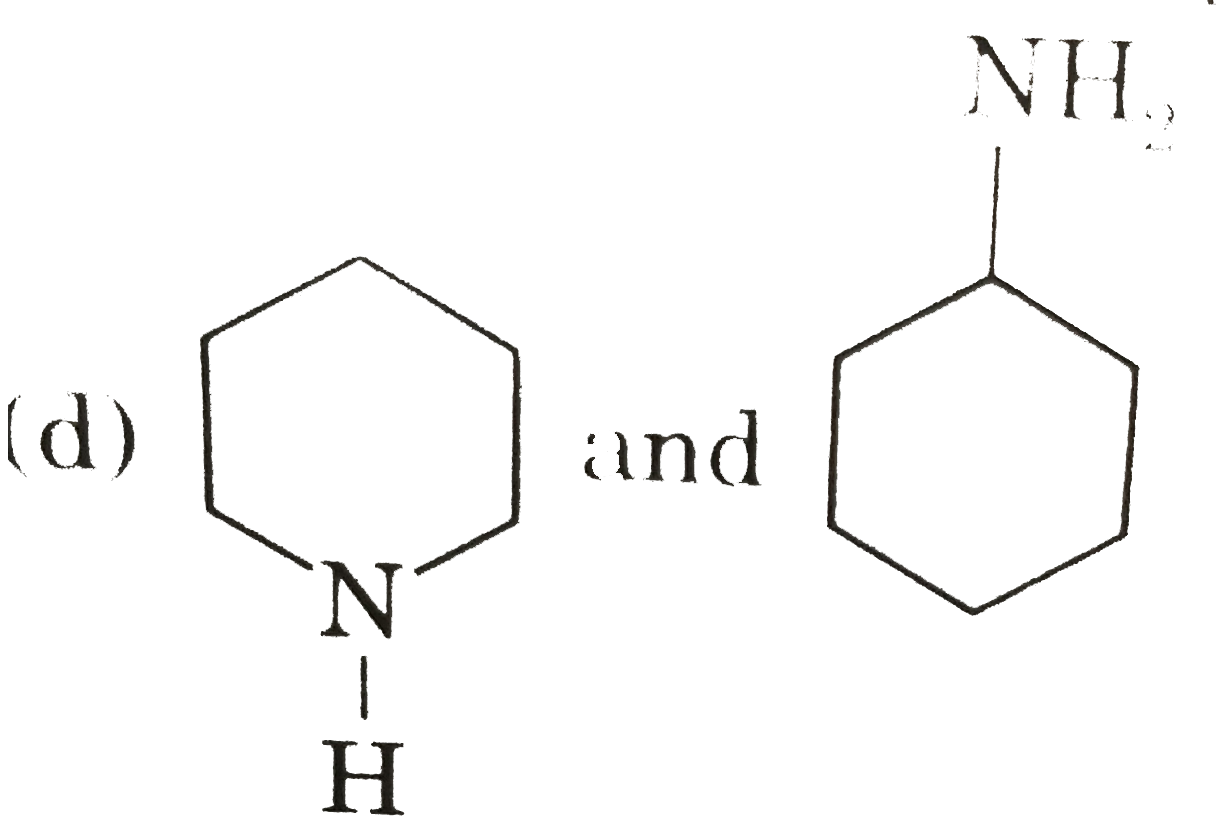Acetaldehyde and Propyne can be distinguish by :
(i) Tollen's reagent " " (ii) l2/NaOH " " (iii) Lucas reagent " " (iv) neutral FeCl3
(i), (ii) & (iii)
(ii) & (iii)
(i) & (ii)
(iii) & (iv)
The correct Answer is:C
Acetaldehyde and propyne can be distinguish by tollen's reagent and Iodoform test.
Topper's Solved these Questions
- STRUCTURAL IDENTIFICATIONBOOK - RESONANCECHAPTER - STRUCTURAL IDENTIFICATIONEXERCISE - Advanced level Problems (Part-II)
21 Videos
- STRUCTURAL IDENTIFICATIONBOOK - RESONANCECHAPTER - STRUCTURAL IDENTIFICATIONEXERCISE - Advanced level Problems (Part-III)
12 Videos
- STRUCTURAL IDENTIFICATIONBOOK - RESONANCECHAPTER - STRUCTURAL IDENTIFICATIONEXERCISE - Exercise-3 Jee (Advanced) (Part-II)
15 Videos
- STEREOISOMERISMBOOK - RESONANCECHAPTER - STEREOISOMERISMEXERCISE - EXERCISE (PART III : PRACTICE TEST-2 (IIT-JEE (ADVANCED PATTERN))
22 Videos
- SURFACE CHEMISTRYBOOK - RESONANCECHAPTER - SURFACE CHEMISTRYEXERCISE - Section - 5
1 Videos
Similar Questions
Knowledge Check
Acetaldehyde and propyne can be distinguish by
(i) Tollen's reagent (ii) I2/NaOH (iii) Lucas reagent (iv) neutral FeCl3A(i) ,(ii) & (iii)B(ii) & (iii)C(i) & (ii)D(iii) & (iv)Which of the following pairs can be distinguished by using Lucas reagent?
A B
B C
C D
D
Which of the following paris can be distinguished by using Lucas reagent?
A B
B C
C D
D
Identify the reagent which can differentiate the given pair compounds .
(a) Acetone and ethanol
(b) Phenol and 1- propanol
(c ) 1-butyne and2-butyne
(d)
(1) NaOH,I2 (2) Tollen's reagent
(3) Fehling solution (4) Hinsberg's reagent
(5) Neutral FeCl3 (6)2,4-DNP
(7) NaHCO3 (8)Schiff's reagent
[Hint : If pair (a) is differentiate by 1, (b) by 2, (c ) by 3 and (d) by 4 then fill 1234 in OMR sheet.]
View Solution2-pentanone can be distinguished from 3- pentanone by which reagent ?
View SolutionEach question has choices (a), (b), (c ) and (d) out of which ONLY ONR is correct.
STATEMENT -1 :But-1-tne and but-2-yne can be distinguish by Tollen's reagent.
STATEMENT - 2 : Terminal alkyne can react with Tollen's reagent but nthe internal alkyne can not react.
View SolutionThe following two compounds I and II can be distinguished by using reagent
 " "
" " 
(a) aq. NaHCO3 " " (b) Neutral FeCl3
(c ) Blue litmus solution " " Na metal " " (e) HCl/ZnCl2 anhydrous
View SolutionNO−2 and NO−3 can be distinguished by which of the following reagent?
View Solution

